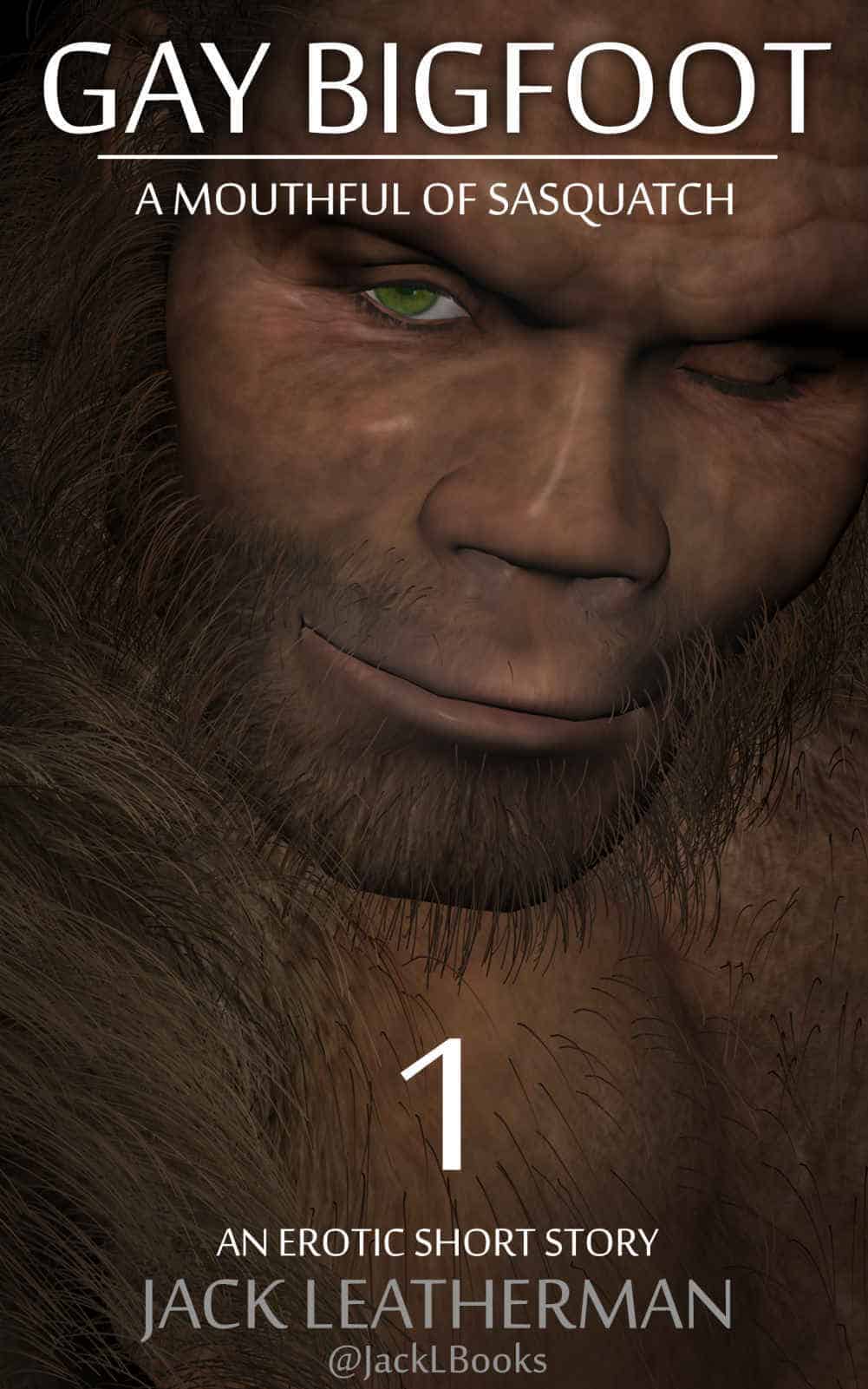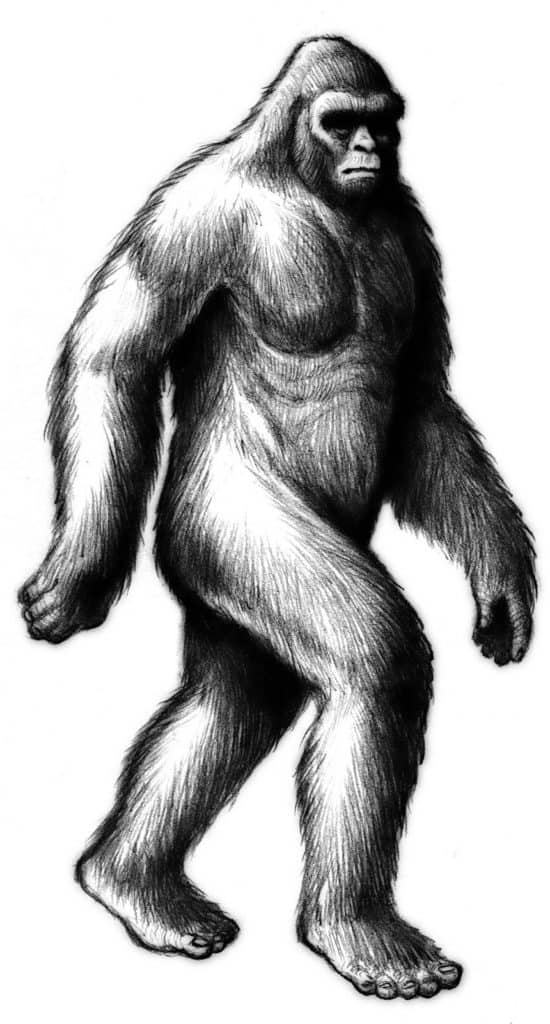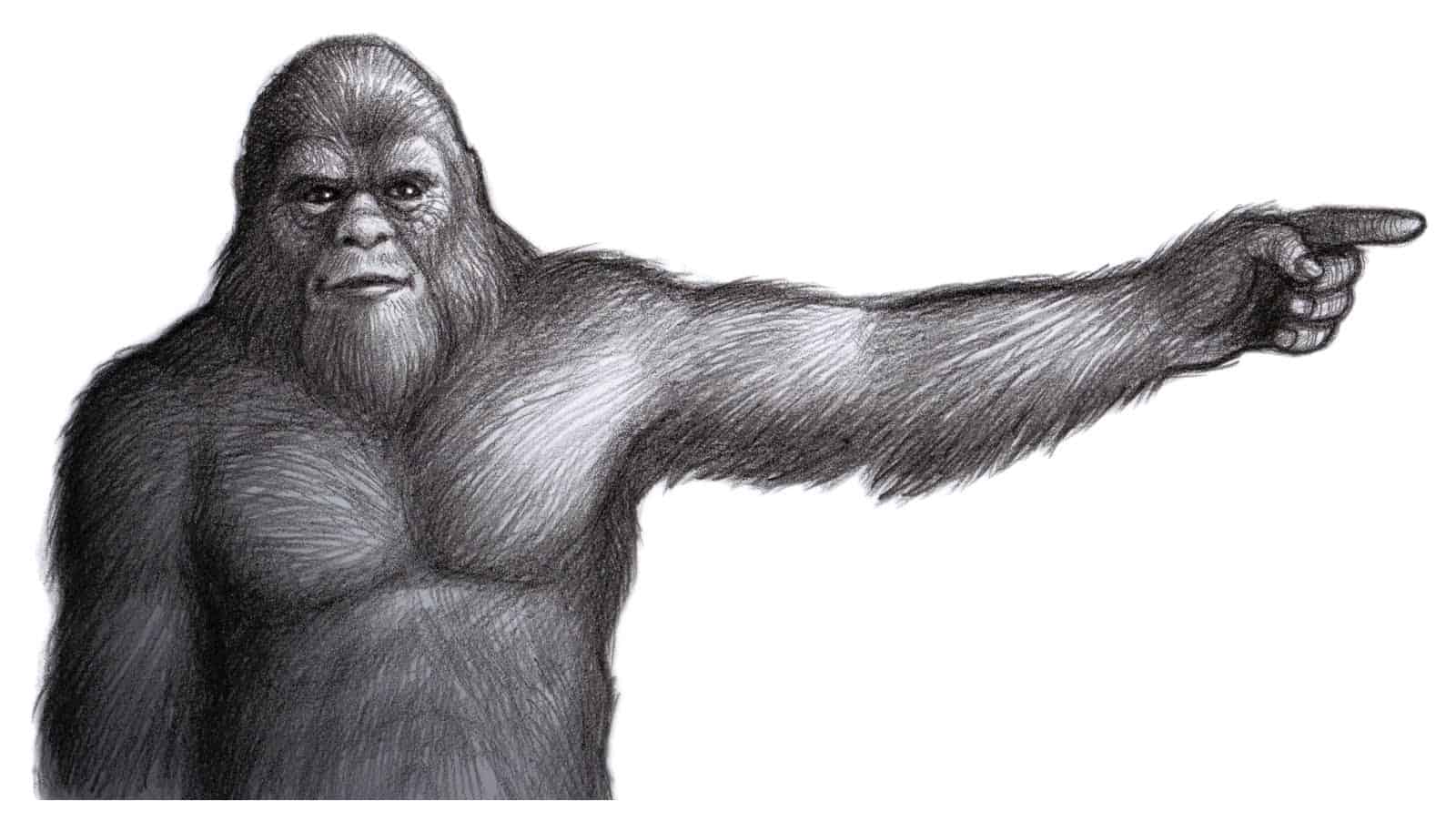I’m no scientist, but from what I’ve gathered from interviewing scores of them over the last five years, it’s not all it’s cracked up to be. Contrary to what some may believe, you don’t get to just create 8-foot-tall zombie men with bolts in their necks and go all Jekyll and Hyde whenever you want. You have to, like, deal with politics and shit.
In fact, it seems that many scientists are forced to spend their lives formulating ways to jump through bureaucratic hoops rather than formulating hypotheses—keeping their heads down while desperately trying to justify their existence by getting their names into academic journals and scrambling for funds.
“The saddest people on Earth are junior faculty hoping to get tenure at a university, because they’re forbidden to smile in public, crack jokes, or make eye contact, and they absolutely can’t be seen as being even mildly interested in tabloid stories,” Dean Radin writes in his 2017 book Real Magic. “It’s the kiss of death to put one’s twenty-plus years of education and training in jeopardy by being perceived as too sympathetic about controversial topics.”
So when it comes to Sasquatch, it seems the hoops a scientist has to jump through to study the creature are even wider, higher—and on fire. Or at least, that appears to be the case among some scientists brave enough to take the heat.
Even though it’s impossible to prove that Bigfoot doesn’t exist, and science holds that the absence of evidence is not evidence of absence—some scientists absolutely insist that Sasquatch can’t be real, says Jeff Meldrum, Idaho State anatomy and anthropology professor and author of Sasquatch: Legend Meets Science. Which is ironically un-scientific of them.
“I was faced with a colleague saying, ‘[Bigfoot] can’t exist; therefore, they don’t exist, and it doesn’t matter what evidence you think you have.’ And that’s a verbatim quote,” Meldrum says. “Where can you expect to get an equitable and objective review from an individual like that? They’ve already made up their mind.”
Meldrum, who has been studying Sasquatch since the mid-1990s, has endured his fair share of gossip and cattiness, having been on the receiving end of what seems like the academic equivalent of sticking gum in a tween girl’s hair. Some of it from his own colleagues.
“Do I cringe when I see the Discovery Channel and I see Idaho State University, Jeff Meldrum? Yes, I do,” former Idaho State lecturer Martin Hackworth told the Associated Press in 2006, claiming that Meldrum’s Sasquatch research is a joke. “He believes he’s taken up the cause of people who have been shut out by the scientific community. He’s lionized there. He’s worshipped. He walks on water. It’s embarrassing.”
Meow.
Some have tried to get Meldrum’s tenure revoked because of his interest in Bigfoot, appearing angered by his curiosity about the mythological animal.
According to the late Grover Krantz, a Washington State anthropologist famous for being the first scientist to dedicate his life to the Sasquatch search, this anger comes from fear: Some scientists worry that Sasquatch will be discovered and they’ll be outed as shortsighted fools. Krantz was publicly shamed by other scientists, turned down for promotions, and nearly fired for his interest in the creature.
“There’s a lot of pigheadedness about scientists,” Krantz told the Virginia Chronicle in a 1982 article about Bigfoot. “If science has missed an animal this big, science would look a little funny. So better not look for it.”
Krantz estimated that 10-20 percent of scientists do believe in Sasquatch, according to a 1978 story in the Desert Sun. They just don’t want to admit it because they’re afraid their careers will go up in smoke.
This fear is understandable. Pop culture has made Sasquatch into a joke—whether it’s Jack Black transforming into a baby Sasquatch while tripping on mushrooms, or the vast array of Amazon erotica that plagues us. See: Gay Bigfoot: A Mouthful of Sasquatch.)
Once we go Gay Bigfoot, can we ever go back? Or will we just have to go bisexual?
Speaking of which, there apparently exist handfuls of scientists who are questioning their stance on Sasquatch’s existence, Meldrum says, but still remain in the closet.

According to Meldrum, when he gives presentations on Bigfoot, scientists will walk up to him and secretly urge him to continue his Bigfoot research, saying things like, “I’m so glad someone is finally doing something like this. But I’m glad it’s not me.” They’ll even sneak his informational brochures into their pockets, Meldrum says, then look both ways to make sure no one saw before slithering away.
Because some scientists aren’t open to entertaining the idea that Bigfoot exists, it makes the topic difficult to study, says primatologist and biologist Esteban Sarmiento, head of The Human Evolution Foundation and former research associate at the American Museum of Natural History.
“The theory is the tool that allows you to see the facts,” Sarmiento says. “For people to see something totally new, they’d need a theory that would allow for it. Unless the academics have new theories, some facts will always be closed to them.”
Of course, Sarmiento and Meldrum don’t think there’s a zero percent chance for Sasquatch to get his big foot in the door.
There’s been a paradigm shift away from the single-species hypothesis, says Meldrum, which posited that two culture-bearing hominins (species regarded as human or related to humans) couldn’t exist at the same time. Now, however, the fossil record shows that myriad now-extinct hominins existed simultaneously, that there wasn’t a single-file line of evolution—making room for the possibility that Bigfoot and other creatures like it could have evolved from the same lineage.
Because of this shift in perspective and because history shows that studying Bigfoot and other mythological animals has benefitted science, a select few reputable institutions have taken heed.
For instance, in 2013, Oxford University and zoological museums in Germany and France tested 57 hair and fur samples in the hopes of discovering an anomalous primate, and in the same year, a geneticist at the University of Buffalo in New York tested possible Yeti hairs.
Times are a-changing, however slowly.
“There’s an undercurrent [of interest] that’s present, but it’s suppressed by the pall of this prevailing paradigm that has stifled any consideration [of Sasquatch’s existence]—and still casts its shadow forward,” Meldrum says. “Why, if we’ve got other lineages of hominins persisting up to 10,000 years ago, possibly Neanderthals and Homo heidelbergensis and perhaps even Australopithecines in Southeast Asia—why is it so inconceivable that such creatures might exist today? There’s no good rebuttal.”
Good rebuttal or no, Bigfoot seems to be pretty damn taboo among academics, and according to Meldrum, it’s nearly impossible to get any Sasquatch research published in respectable journals.
If your reaction to this is, “No shit. Respectable journals shouldn’t publish ridiculous articles! They should publish innovative discoveries and ideas that change society for the better,” I totally agree with you.
I’ll never forget The Journal of the American Medical Association’s groundbreaking 2015 report showing that “turning on a fan can cool you down.” Or the Journal of Applied Psychology’s study showing that older people have wisdom to share in the workplace (and aren’t just say, animated corpses who slow down progress by suggesting I put down my phone). Ooh! And the American Statistician article that startlingly revealed that Mexican drug war actually increases homicide rates!!!
And here I was cranking up my heating blanket in July, rallying to replace all workers over 35 with androids, and trafficking cocaine to avoid impending death! Thank God these were selected for publication!
Seriously though, even if you don’t believe in Bigfoot, examining the idea of a potentially intelligent, undiscovered creature is arguably more innovative than the peer-reviewed study where a guy had the tip of his dick stung by bees to see if it hurt. Okay, it wasn’t just his dick; I’m being dismissive. He had the rest of his body stung too. For science.
WHATEVER.
The point: Bigfoot research likely won’t be cited in other journals because people don’t want to be caught dead studying, writing or thinking about it in the first place, Meldrum says—not unless they’re explicitly trying to prove Bigfoot doesn’t exist.
“I can guarantee you, any paper that attempts to debunk or appears to debunk a relic hominoid, the Yeti or the Sasquatch, will get published,” Meldrum says. “If it’s even marginally written, it will still get published. But the opposite is true with anything that could be construed as presenting credible objective evidence for the existence.”
Of course, this isn’t to say that every Bigfoot paper should get published, and if it doesn’t, it faced anti-Bigfoot bias. Scientists can squeeze out turds in every subject, and said turds deserve to be flushed, not squished inside the pages of Nature. However, scientists and academics are fallible, as is the peer review system, and Meldrum isn’t the only one saying that bias limits the dissemination of information.
This concept is actually what inspired the Journal of Controversial Ideas, a new publication created explicitly to allow academics to publish work that could be considered too offensive or unpopular for the mainstream. I reached out to Francesca Minerva, one of the journal’s editors, to see if she’d ever consider publishing an article on Bigfoot, and she said she doesn’t know enough about Sasquatch to even answer, but she seemed open to reviewing it earnestly.

Curious about what a not-so-controversial journal would do, I emailed Peter Ellison, Harvard anthropology professor and current editor of the American Journal of Physical Anthropology, to ask if the journal would ever consider publishing an article on Bigfoot. His response: “I don’t know.” Certainly not an emphatic yes, but he didn’t flip me the emoji-bird, so, there’s that.
Meldrum does respect the idea of peer review and says it’s necessary to keep scientists in check. However, when it comes to Sasquatch, Meldrum notes, there’s at least a 50/50 chance that the politics and biases will keep his work from getting published.
“You don’t always get objective reviews. You have editors who are worried about their own reputation; you have reviewers who are narrow-minded and parochial in their thinking,” Meldrum explains. “It’s always been a crapshoot for me when I submit abstracts or presentation proposals on the subject [of Bigfoot]. Literally half the time it gets through because by whatever coincidence I’ll have a couple people who are open-minded enough to allow it, then the very next year it gets the kibosh.”
And because Sasquatch research isn’t getting published, it’s possible that many won’t know it’s being done, or be encouraged to look into it themselves.
Meldrum is trying to fight this cycle. He’s in charge of the specialty journal Relict Hominoid Inquiry, which provides an outlet for academics and scientists who are interested in exploring Bigfoot in a serious way.
“I go to great pains to make sure that things are done properly, and only quality research goes out that has been reviewed, edited and revised,” Meldrum says.
But despite the journal’s commitment to scientific integrity, Meldrum says, it is still perceived as fringe, self-published, and not to be taken seriously.
Of course, stigma and reputation aside, even if a scientist IS interested in Sasquatch, she likely can’t afford to be—literally. Because there’s no money in Bigfoot research.
“You have to realize, academics have to make money. It’s not just about people living off the air and existing on their thoughts. They have to make a living at it. And I would think most academics by the time they’re in their 40s, they’re done. They’re not really interested anymore,” Sarmiento says. “Most of them—and I’m not saying all of them, but most of them—have their job, they’re preoccupied in their lives. They’re not interested in always pushing new frontiers in science. A lot of them are interested in professing, and there they still push their stupid battles, the same things they were saying for 40 years, but it’s not new anymore.”
When asked if he thought scientists would jump at the chance to research Bigfoot if handed a $5 million grant, Sarmiento gave an emphatic, “Absolutely!”
Sure, there’s been some money donated to Sasquatch research over the years, says Sarmiento, but only small amounts, and not enough to maintain a group of people doing consistent research on it for decades. And when you’re talking about looking for a rare species of animal, consistent money over a long period of time is a must.
“You’ve got to keep in mind the nature of the quarry. It’s this extremely rare, solitary, far-ranging, reclusive and intelligent creature. For every Bigfoot in the state of Idaho, there’s over 100 black bears. How often do you bump into a black bear out in the woods when you’re out there walking around?” Meldrum says. “Even with a $5 million grant and a team of scientists, it doesn’t suddenly make it easy to get that definitive evidence. Given how rare [Sasquatch] are … How do you find this proverbial moving needle in the haystack?”
Even with the scores of amateur researchers and outdoorsmen collecting potential Bigfoot hair, bones, footprint casts, and whatever else, DNA tests are expensive, says Meldrum, and samples are unlikely to get tested.
“I’ve been having a problem with trying to identify labs to collaborate with to do DNA analysis,” Meldrum says. “Even if I can provide the funding, they’re concerned that it’s a controversial subject, and if they don’t get the brass ring, if they don’t arrive at conclusive evidence that something new and novel exists, they’ve wasted that time, they won’t get a publication out of it.”
Some of Meldrum’s projects involve trying to get environmental DNA tested and creating digital archives of footprint evidence so that other researchers can access it more readily. His projects are typically funded by philanthropists outside of academia who have, for whatever reason, taken a personal interest in Sasquatch.
Some might argue that scientists aren’t interested in Bigfoot simply because there has never been enough evidence, so they don’t want to waste resources, which is fair. But others might argue that the lack of scientific interest and funding is holding humans back from discovering Bigfoot, and that’s why no one has managed to collect enough passable evidence to satisfy science. This is something Krantz took very seriously, which is why he would take a shotgun on his Bigfoot hunts, determined to bring in irrefutable evidence: a corpse.
“If somebody found a body of a Bigfoot, you can bet there would be thousands of scientists fighting for it,” Sarmiento says. “But the way it is, the evidence is too wishy-washy, and people aren’t going to invest time.”
Meldrum agrees.
“As soon as [Sasquatch] is shown to exist,” Meldrum says, “there’s going to be people jumping on the bandwagon right and left, coming out of the woodwork, saying, ‘Oh, I knew it all along! I was just waiting for somebody to find it.’”
I mean, sure. It could happen.
Maybe Krantz and Meldrum are right, and there’s there’s a legion of Bigfoot academics lying in wait for the day Sasquatch is declared real—a colony of geeks in white coats who will scurry like lab rats into the great, wilderness maze, squeaking Sasquatch’s name.
But really, I’d like to think that most scientists believe, at the very least, in the possibility of Bigfoot’s existence—and that they just don’t care enough to jeopardize their chance at tenure (which is why I was largely told to take a fuckin’ hike when I reached out to scientists to comment on Sasquatch).
Is apathy better than being a straight-up, obstinate ass? In my opinion, yes, because at least then people aren’t standing in the way of discovery.
In the end, it doesn’t matter how ridiculous Sasquatch may appear. Science is supposed to be objective, and if the scientific community can freely blacklist Bigfoot, what other topics are off limits? What other intellectual blind spots are created through politics and social stigma? What happens when Gay Cold Fusion comes out on Kindle?
All this can make the world of scientific inquiry seem bleak, but then again, what do I know? I’m just a journalist, with about as much science experience as a fly on the wall.
Still, the experts have hope.
“If an idea is important and affects a lot of things, it’s going to come out,” Sarmiento says. “And more importantly, it’s not going to be just thought by one person, it’s going to be thought by many people. I would hate to think that good ideas die and get buried and disappear … I don’t know, maybe they do. But that’s not what I believe in.”




